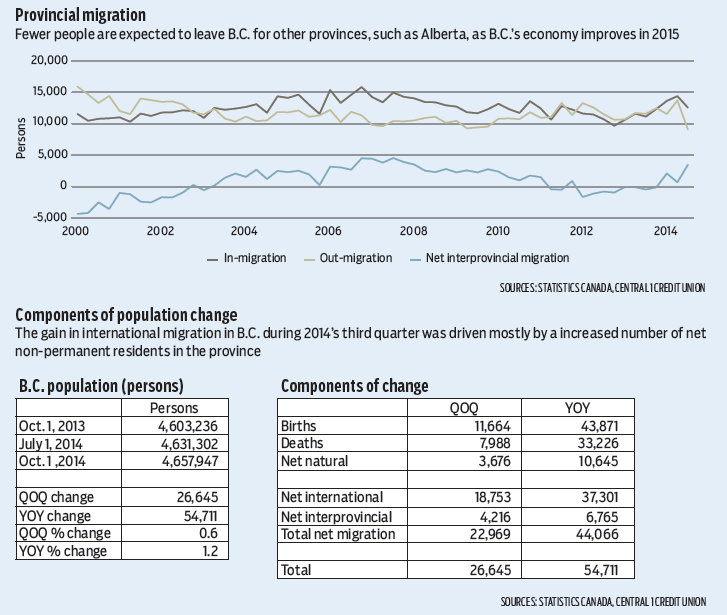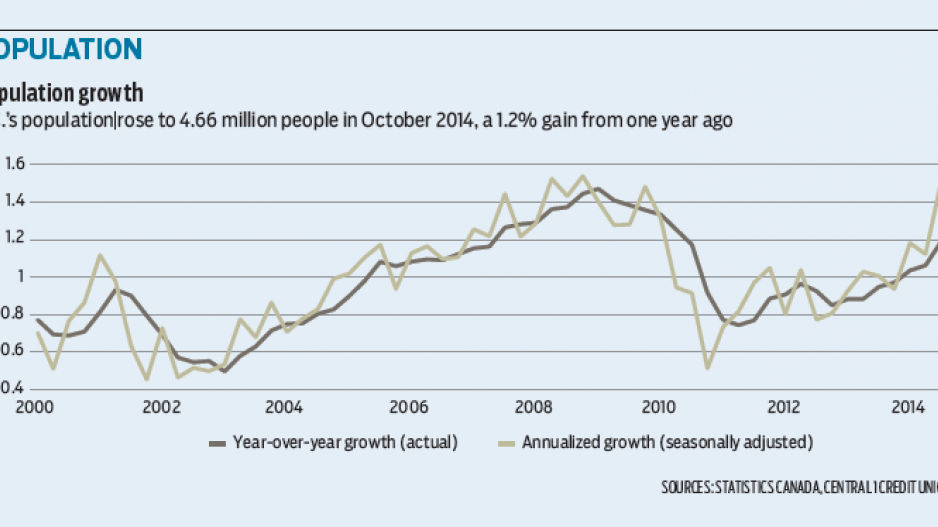Population growth jumped in the third quarter as fewer residents left B.C. for other provinces and net international migration increased modestly. According to Statistics Canada estimates, B.C.’s population approached 4.66 million as of October 1, 2014, a 1.2% gain from a year ago. This compared favourably with national growth of 1.1%, although it was again outpaced by higher growth in the Prairie provinces.
Relative to levels on July 1, estimated population grew 0.6% or by nearly 26,645 during the third quarter, led by 18,750 net international migrants, and 4,215 interprovincial migrants. The ranks of the former grew by about 10% compared with the same quarter in 2013; interprovincial migration was stronger compared with a small net outflow a year ago.
The third-quarter population surge pushed growth to a pace unseen since 2008-10, and, after adjusting for seasonal factors, quarterly growth accelerated to an annualized pace of near 1.5%. Although limited population growth is expected over the next few years, the pace is expected to retract in the fourth quarter given some one-off drivers in the third.

Interprovincial migration is on the mend following net outflows from 2011 through 2013 and is expected to contribute to population growth as improving economic conditions in B.C. and growth in the broader Canadian economy drive flows to the province. However, the third-quarter surge was largely due to an unexpectedly sharp 20% year-over-year decline in interprovincial out-migration – the lowest since late 2009. Despite potentially weaker oil-industry demand from neighbouring provinces, this is expected to partially reverse in the fourth quarter. Meanwhile, the modest gain in third-quarter international migration reflected an increased number of net non-permanent residents, even as the flow of landed immigrants declined. This component of migration is highly volatile, and a reversal would not be surprising. •
Bryan Yu is senior economist at Central 1 Credit Union.




